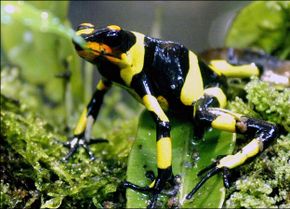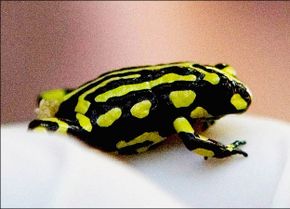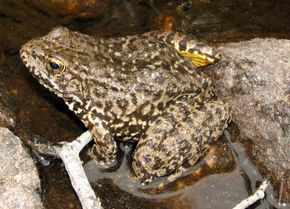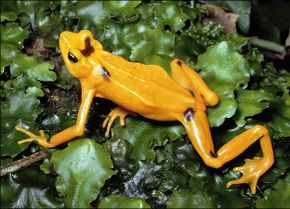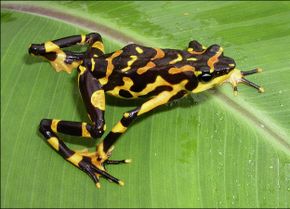Lehmann's Poison Frog
Among the larger species of poison dart frog, the Lehmann's poison frog inhabits the submontane tropical rainforests of Colombia. It spends most of its life on the ground, where it lays its eggs, though it will occasionally perch on low-lying leaves. This frog's bright color bands (red, orange or yellow) warn potential predators that it is highly poisonous. Like other poison dart frots, the toxins in its skin may derive from precursor moleclues in the ants that it eats.
Advertisement
The entire wild population of Lehmann's poison frog lives in two small locations, together equalling roughly four square miles in size. This highly fragmented population is on the brink of extinction. Human encroachment, logging and especially the cultivation of illegal crops — and the associated pollution from the spraying of these crops — are the greatest threats to the Lehmann's poison frog.
